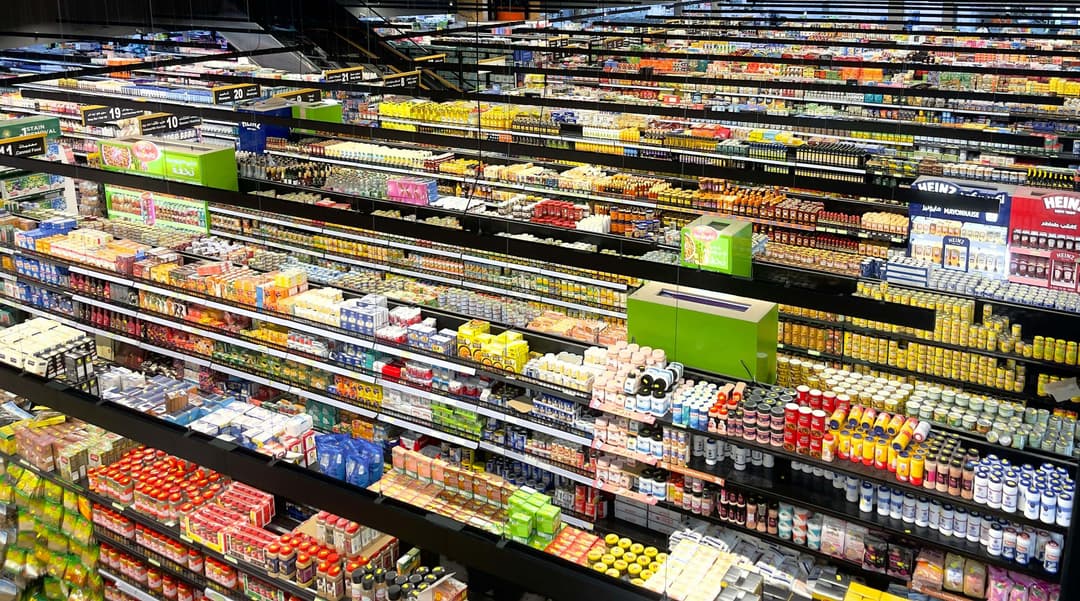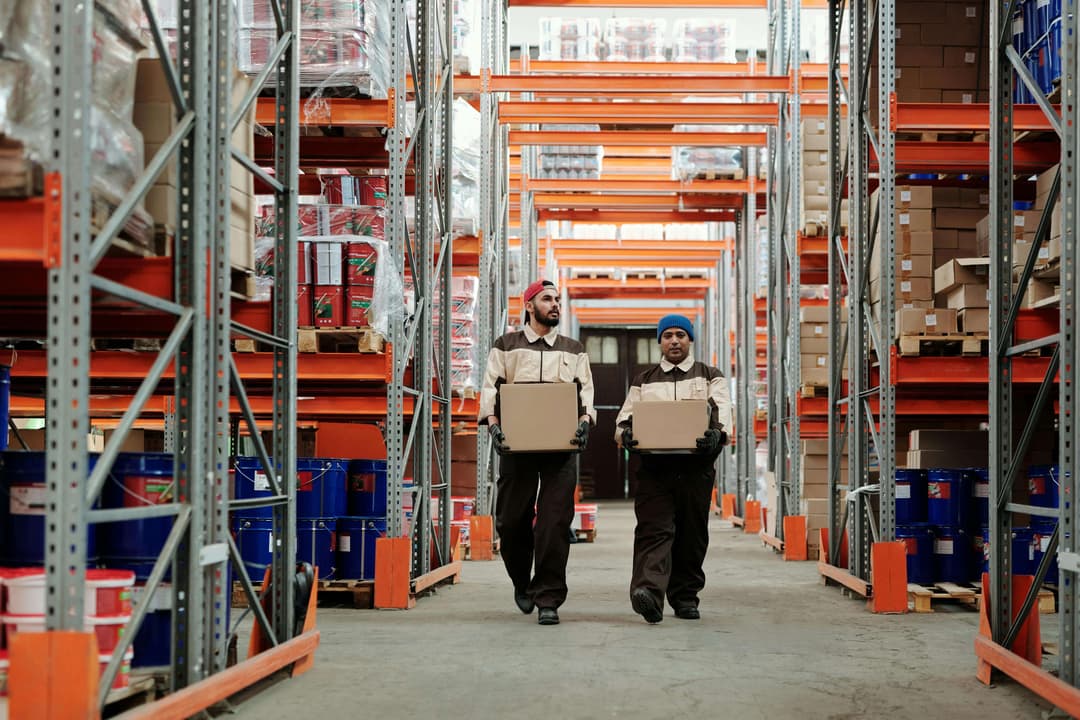Retail Logistics: Models, Challenges, and Trends (2025)
Explore how retail logistics is evolving in 2025. Learn about models, challenges, and strategies that help retailers optimize supply chains and delivery.

200+ buyers trust Torg for sourcing

Retail logistics isn't an element of the retail business. It is the business. Unless goods move quickly, precisely, and effectively through the global supply chain, you lose customers. That's it. If you operate a retail store or ship directly to consumers, from inventory management to timely delivery, it all influences the extent to which you satisfy customer needs. And with transforming retail logistics rapidly, due to wiser tech, narrower margins, and more demanding customers, retailers must re-examine how they manage the whole retail logistics process.
This guide breaks down what actually works in retail logistics process today, where supply chain solutions are headed, and how real-world logistics operations are shifting to have that competitive edge. Covering reverse logistics to optimizing transportation routes, you’ll get a clear look at the trends transforming the retail sector in 2025 and what it takes to stay ahead.
What Is Retail Logistics?
Retail logistics is the process of managing how products move from suppliers to stores or customers. It includes activities like transportation, warehousing, inventory management, and order fulfillment to make sure the right products are available at the right time and place. Whether it's one pack of gum or a truckload to a flagship store, retail logistics deals with the flow, quick, intelligent, and on-target.
In contrast to the classical logistics, retail logistics has to handle greater quantities of small orders, volatile customer feedback and activity, and real-time stress. It's speed-based, accurate, and fast to turn around when demand changes or supply chain events occur. That implies everything must come together harmoniously like supplier management, inventory management, warehouse laborers, delivery routes, reverse logistics, etc.
A good retail logistics operation doesn't merely stock your shop, it earns your brand credibility. When delivery falters or fulfillment fails, customer loyalty flies out the door. Retail logistics makes or breaks your customer experience.
What Does Retail Logistics Include?
Retail logistics includes all the processes necessary to ensure products are available at the right place, at the right time, and in the right quantity. Here's what retail logistics typically includes:
- Inventory management & forecasting: You can't sell what you don't have. Intelligent forecasting prevents stockouts and overstocking, both of which damage the bottom line and customer satisfaction.
- Retail warehousing & fulfillment centers: These aren't storage sheds. They're quick-moving distribution points that must pick, pack, and ship quickly and accurately, sometimes through multiple sales channels.
- Distribution centers & route planning: Delivering the goods to the store or doorstep? That all hinges on optimizing routes and harnessing data to shave off delays and lower transportation costs.
- Reverse logistics: Returns are inevitable. An efficient reverse logistics process keeps customers satisfied and keeps the pinch off your inventory and lowers operational costs.
- Customer service & delivery communication: Real-time monitoring, updates on orders, and simple contact choices are no longer luxuries, they're minimum requirements.
Logistics operations for today's retail industry must be flexible. Since there are supply chain interruptions, growth in global retail sales, and increased volume of deliveries, retailers will always need retail logistics solutions that are nimble, technologically-advanced, and capable of keeping up with the demand without sustaining too much damage.
Difference Between Retail Logistics and Traditional Logistics

Retail logistics and traditional logistics serve different ends of the supply chain, with retail logistics focused on delivering products directly to consumers or retail stores, while traditional logistics typically handles bulk distribution between businesses.
Retail logistics prioritizes speed, accuracy, and customer experience, often involving small, frequent shipments and complex inventory management across multiple sales channels like e-commerce and physical stores.
In contrast, traditional logistics is more streamlined and cost-efficient, dealing with large-volume shipments to wholesalers or distributors. It usually involves fewer SKUs, centralized warehousing, and more predictable delivery schedules.
Another key difference lies in customer interaction. Retail logistics must support fast delivery, seamless returns, and transparent order tracking for end-users. Traditional logistics, however, operates primarily behind the scenes with minimal direct customer contact.
Don’t let logistics bottlenecks slow you down. Torg helps retail businesses source trusted manufacturers, co-packers, and logistics partners, all in one place. Explore real-time solutions that solve 2025’s biggest logistics challenges. Sign up for free and start sourcing smarter with Torg.
Components of an Effective Retail Logistics System
If your logistics system can't keep up, neither can your retail company. It all comes down to a combination of strategy, timing, and technology. Here's what that means in real terms:
Inventory Planning and Forecasting
Guesswork no longer applies. Retailers leverage historical sales data, today's trends, and AI-based tools to forecast future demand. This isn't about knowing what will sell; it's about knowing where and when things will flow. Intelligent forecasting ensures supply and demand are aligned, avoids overstocking, and limits the likelihood of stockouts when customers order in large volumes.
Warehousing and Distribution Centers
Warehouse retailing is more than piling boxes. Distribution centers have become fulfillment centers, shipping centers, and return centers. Their positioning, design, and velocity impact everything from the speed at which orders ship to the ease of returns. A slow warehouse translates to missed delivery times, unhappy customers, and lost money.
Transportation and Freight Management
Here's where logistics transactions become concrete. Whether you're managing outbound logistics within city limits or incoming freight from abroad, the efficient routing of transport reduces downtime and lowers the cost of operations. With real-time monitoring and improved routing, retailers handle logistics and can operate with speed and react to problems before they blow up.
Technology Integration (WMS, TMS, RFID, etc.)
Technology is what holds the whole system together. A good logistics operation employs software such as Warehouse Management Systems (WMS), RFID scanners, and Transportation Management Systems (TMS) to make it happen. These technologies enhance inventory tracking, assist warehouse workers in remaining productive, and enable logistics staff to keep orders flowing without interruption.
Reverse Logistics and Returns Management
Returns can be a nightmare if you don't have a plan for them. A solid reverse logistics process allows you to manage returned merchandise easily without disrupting the rest of your supply chain management. And let's face it, customer satisfaction relies on smooth returns. If a consumer can't return something without hassle, they will go find another brand that allows them to. In a retail market where loyalty is tenuous, your returns strategy has to be tight.
Types of Retail Logistics Models
There is no one-size-fits-all in retail logistics. Some models emphasize speed. Others value flexibility, cost control, or customer satisfaction. Let's dissect how the major retailers get products into people's hands.
Omnichannel Logistics
This is the model constructed for consumers who demand choices. Purchase online, in-store pickup? No problem. App ordering and in-store returns? Yes, that too. Omnichannel logistics integrates every aspect of the functions of retail logistics—inventory management, fulfillment, and delivery processes—across all channels.
To make this work, you require close system integration, end-to-end inventory visibility, and seamless coordination throughout the entire retail supply chain. Retailers who succeed with this model score big in terms of customer loyalty and rapid service delivery.

Dropshipping and Direct-to-Consumer (DTC)
In a dropshipping arrangement, retailers don't handle the product all. Orders are sent directly to the supplier, who fulfills them. It's lightweight, affordable, and removes retail warehousing, but it also places immense pressure on the supply chain to deliver promptly.
DTC brands tend to exert greater control. Some fulfill in-house, some partner with third-party logistics companies (3PLs) for warehousing and delivery. Either way, this model provides brands greater control over customer experience and brand, particularly in last-mile delivery and customer communication.
Just-In-Time (JIT) Logistics
JIT logistics is all about speed and accuracy. Inventory comes when it's required, not a day sooner. It saves the cost of warehousing and prevents holding onto money in unsold goods. But it's dangerous, one glitch in inbound logistics and all halt.
Merchants employing JIT require a bulletproof supplier base, minute-by-minute tracking of inventories, and truck routes that never lose a beat. It's a high-payoff, high-stress logistics tactic that requires as much consistency as possible throughout the entire supply chain.
Third-Party Logistics (3PL) and Fourth-Party Logistics (4PL)
3PLs assume certain aspects of your logistics operation, such as storing inventory, packaging orders, or shipping. Retailers employ them in order to grow quickly without investing in their own infrastructure. Consider them the behind-the-scenes hands that do the heavy lifting.
4PLs, however, play a larger role. They don't merely perform tasks, they run your whole logistics business. From planning supply chains to managing several 3PLs, 4PLs are more about strategy than service.
If you're a retail business looking to grow quickly or streamline existing logistics operations, 3PLs and 4PLs give you flexibility, control, and access to supply chain solutions you can't afford to develop from the ground up.
What Are the Common Challenges in Retail Logistics?
Retail logistics becomes seamless on paper until you encounter the real-life bottlenecks. Below are the day-to-day challenges that slow down, increase expenses, and irk brands as well as customers.
Rising Customer Expectations
Shoppers are demanding fast, affordable, and convenient everything. Next-day delivery, real-time order status, and simple returns (with not a single mistake. And if retailers disappoint) they don't shop elsewhere) they don't return. To meet this need involves investing in last-mile shipping, customer engagement software, and improved retail logistics processes to retain loyalty.
Real-Time Inventory Visibility
Nobody wants to order something and be informed that it's out of stock. If your inventory tracking is inaccurate, you lose sales and lose trust. Without real-time data, forecasting is off and the supply chain gets gummed up. Retailers require tight synchronization between warehouse management systems and all sales channels in order to stay accurate and quick.
Shipping Costs and Delays
Supply chain disruptions around the globe have rendered shipping unpredictable and costly. Fuel surcharges, labor shortages, delayed customs—it all adds up. Retailers must now reconsider their transportation routes, negotiate more effectively with third-party logistics partners, and incorporate backup plans into retail logistics strategies.
Returns Processing
Returns are just part of the game in retailing these days. But each returned product cuts into your profit margin. Without a well-functioning reverse logistics system, you're left with slow processing, battered stock, and angry customers. Intelligent retailers design quicker returns workflows that help preserve product value and keep the order fulfillment going.
Innovations Shaping Retail Logistics in 2025
2025 retail logistics is cutting-edge, lightning-quick, and constantly observing. Retailers are not merely shipping goods; they are leveraging technology to predict issues, save on costs, and meet customer demands without ever letting their guard down.
Role of AI and Machine Learning in Logistics
AI isn't only anticipating what's next, it's actually repairing what's broken. There's identifying low stock to raise the alarm on delivery risks, AI can actually help retailers in responding before it goes wrong. Machine learning optimizes every aspect of the retail supply chain, making order fulfillment faster and inventory management more acute.
Application of Robotics and Automation in Warehousing
Automation accomplishes in minutes what it took hours to accomplish before. Robots glide through warehousing centers sorting, packing, and shipping with precision just short of perfection. It's not about substituting people for automation, it's about maintaining retail logistics operations at full speed, even when demand peaks.
Sustainable Logistics & Green Supply Chains
Electric delivery vans, returnable packaging, optimized delivery routes, retailers are greening up their act. Green supply chains are no longer a nicety. They slash emissions, save operating costs, and assist retail businesses in winning over environment-savvy shoppers who care as much about the path as the product.
Smart Packaging and IoT Tracking
Boxes are acquiring brains. With sensors and real-time monitoring, intelligent packaging enables retailers to track every order along the supply chain. From a shipment that is running late or an item sensitive to heat, the system warns you before the customer even knows it's missing.

Retail Logistics and Customer Experience
Logistics isn't merely transporting boxes, it's your brand. Each delivery, return, and status update determines what customers feel about your shop. Mess it up, and they're gone.
How Logistics Impacts Customer Satisfaction
Retail logistics contributes significantly to the way people perceive your company. If their delivery arrives late, damaged, or with no updates, that's what they'll remember. Slim logistics maintain high customer satisfaction and low complaints.
The Importance of Delivery Speed and Accuracy
People expect fast, spot-on delivery every time. Miss the mark, and they’ll bounce to a competitor. Efficient supply chain systems and smarter transportation routes are the backbone of modern customer loyalty.
Personalization in Delivery and Fulfillment
Letting customers pick delivery times, track in real time, or get custom packaging, even down to the gum wrapper, shows that you’re paying attention. It adds value, builds trust, and keeps them coming back.
KPIs and Metrics for Retail Logistics Success
Keeping a tight retail logistics operation in check requires knowing your numbers. These are not the fluffy metrics, they're the heartbeat of how efficiently your supply chain is working, how satisfied your customers are, and how well you're managing resources throughout your retail business.
On-Time Delivery Rate (OTD)
OTD notifies you whether you're keeping your delivery commitments. When shipments begin showing up late, it's often a sign that your transportation paths need revising or your distribution facilities are lagging behind. Maintaining OTD as high as possible is not up for debate when customer satisfaction is at stake.
Order Accuracy
Mistaken orders cost you more than a refund, they erode trust. Correct orders equal seamless fulfillment, robust inventory management, and retail logistics processes that don't miss. If customers receive what they ordered, they linger longer and complain less.
Inventory Turnover Ratio
This measures how quickly you get goods off the shelves. Quick turnover? You're projecting well and minimizing carrying costs. Slow turnover? Your inventory planning is off, and you're freezing cash flow tied up in goods you can't sell. That's money you can't afford to tie up.
Customer Return Rate
A high rate of returns typically indicates something is busted, product quality, order precision, or even packaging. It's also one of the most obvious indicators your logistics system requires a repair. Lower returns equal less agony and content customers who don't have to wonder about their purchases.
Cost per Order Shipped
Each order cannibalizes your bottom line. This metric indicates how much it costs to take a product from your warehouse to the door of the customer. If the number's on the rise, it's time to streamline. Intelligent logistics reduces operational costs without sacrificing service.
What Is the Future of Retail Logistics?
Retail logistics is headed somewhere fast and smart. We’re talking faster deliveries, smarter systems, and supply chains that think ahead. The entire retail logistics process is shifting from reaction to prediction.
Warehouses? They’re getting leaner, closer to customers, and packed with automation. Micro-fulfillment centers are popping up inside cities, slashing mile delivery times and meeting demand faster than ever.
AI won't only assist with predictions, it'll manage suppliers, track warehouse staff, and even assist retailers in managing logistics without human guesswork. Retail logistics management is heading towards real-time choices, not day-behind reports.
And shoppers? They'll demand more. Eco-friendly delivery choices. Track-and-receive that will actually work. Custom drop-offs. If your current logistics processes aren't up for the task, you're behind.
Merchants who invest in effective retail logistics operations and aggressive retail logistics initiatives won't only maintain the pace, they'll leave all others behind. The future is quick, nimble, and customer-centric. Those who get it right will own the retail space.
How Do Retailers Choose the Right Logistics Provider?
Retailers aren't selecting a vendor, they're making the foundation of their retail supply chain. One faulty link, and customer happiness, inventory control, and service delivery all suffer. So they seek more than shipping brawn.
They need a logistics provider that can scale quickly when international retail sales spike and adjust when customer needs change. Retail logistics is not static, peak seasons, market trends, and supply chain disruptions do not disappear. If the provider is unable to pivot, it is a liability.
Technology is table stakes. Merchants demand real-time inventory visibility, route-optimizing tools, and easy integration with their warehouse management systems. If the tech of a provider cannot keep pace, the rest doesn't work.
And it's not just about cost. The appropriate provider reduces operating expenses without compromising. Reverse logistics, smooth mile delivery, and consistent fulfillment keep brands have competitive advantage.
Request a Bulk Order Quote
Simple ordering, transparent pricing, delivered straight to your door

